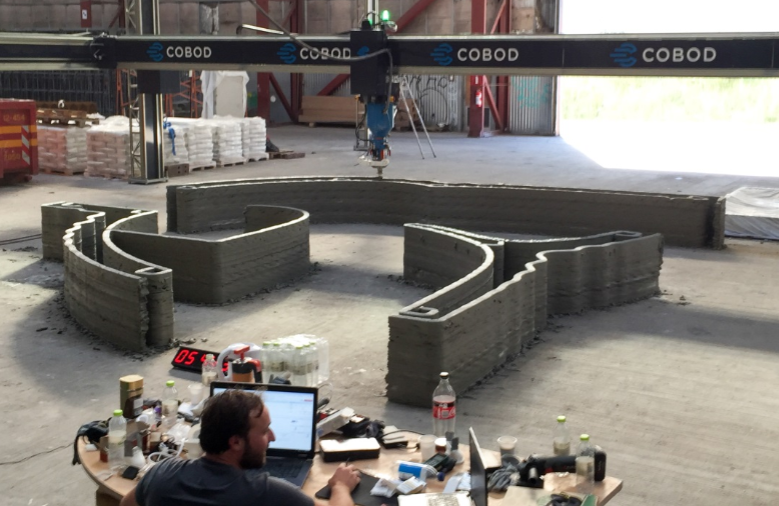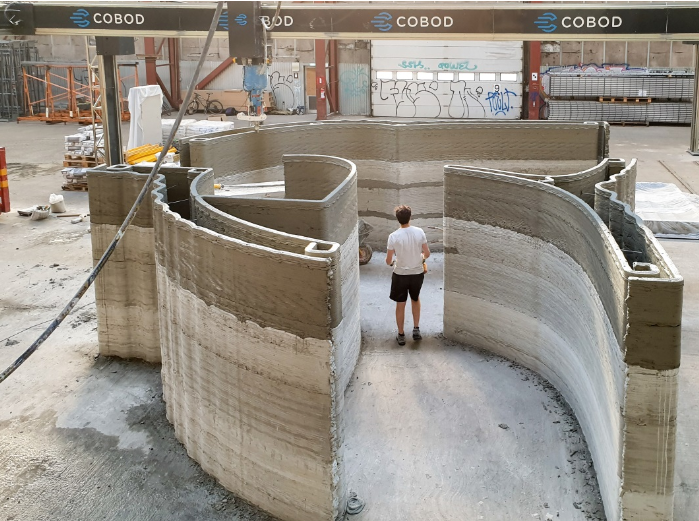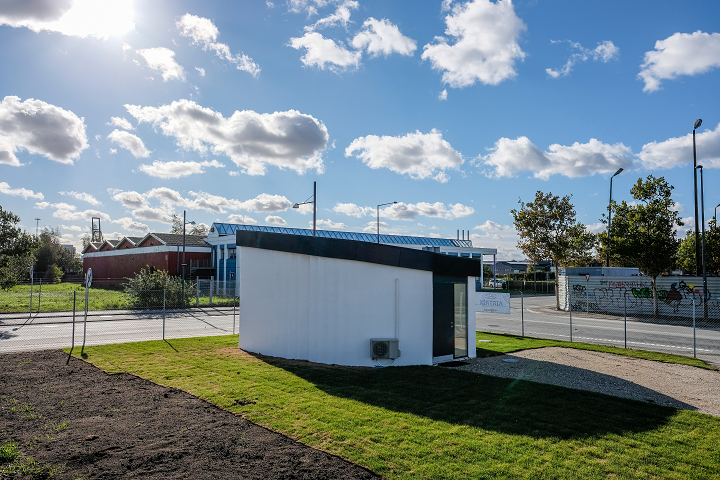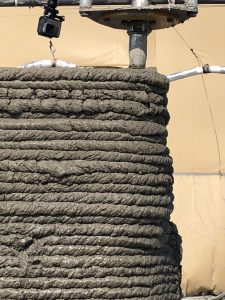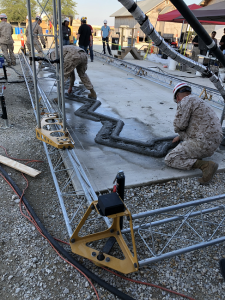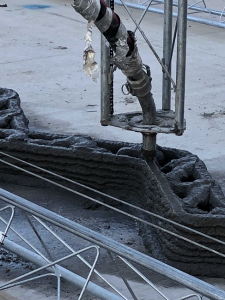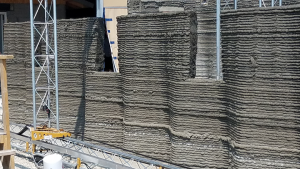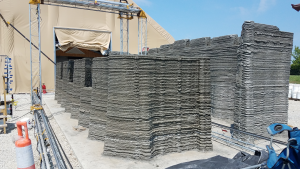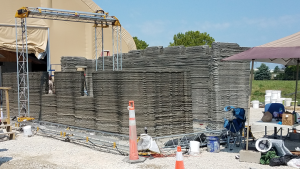A construction company originally created as a spinoff from Denmark’s 3D Printhuset to handle customer demand for 3D printing construction activities and the BOD2 3D printer, COBOD (Construction Building on Demand) is meant to handle large-scale projects. Now, the innovative company has duplicated their initial BOD construction in Copenhagen—but in a fraction of the time.
“When we printed the original BOD building on September 11 two years ago, we spent two months finalizing the 3D printing. This time it only took 3 days, or 28.5 hours to be precise. This is truly a milestone in the development of the 3D construction printing technology and documents a remarkable 20 times improvement in our productivity in just two years,” said Jakob Jørgensen, Head of Technology at COBOD.
“The much faster print time of this print reflects the improvements of our technology by using the new, and 10 times faster BOD2 printer and that we have learned a lot from the first time we 3D printed the building.”
Known as Europe’s first 3D printed building, COBOD originally spent two months on construction of the BOD. With second generation hardware at work, in the form of the BOD2, the team has performed a ‘re-print’ in a stunning three days, commemorating the September 11th production of their initial BOD construction in 2017.
This work not only shows the potential for 3D printing in the construction industry overall—as well as other applications—but also demonstrates the powerful increase in COBOD’s productivity.
COBOD had the attention of the 3D printing industry and enthusiasts from around the world as they delivered the first BOD2 3D printer to Belgian Kamp C, upon winning the Kamp C European tender. Later, in similar circumstances, they ended up delivering another BOD2 to The Technological University of Denmark (DTU), followed by shipment to the Middle East of what they contend is a printer able to complete the largest constructions so far—with fabrication possible of 300 sqm in 3 stories, for a total of 900 sqm of printed building.
“We have said time and time again, that this technology has great potential, is developing very fast and that there is still so much to be learned to fully utilize this technology. Today we provide the documentation for exactly that, by having 3D printed an identical building to The BOD building we did exactly two years ago,” said Henrik Lund-Nielsen, CEO of COBOD. “Although not everything went as well as expected, the results and improvements we achieved this time speaks for itself.”
And while COBOD has been on point over their short time in existence as a 3D printing supplier, they have an excellent track record; however, they also provide extensive documentation of their projects to their clients—and to the world—being clear about successes but also about what went wrong. Here, there were some complications in streamlining processes between the printhead, speed, and materials.
“We are extremely pleased with how well our new BOD2 printer performed during this test. The BOD2 3D construction printer has an impressive print speed of up to 100 cm/second, and during this print we could comfortably print with a speed of 35 cm/sec, which is faster than anybody before,” said Michael Holm, Head of R&D at COBOD. “However, our concrete mixer-pump could not continuously follow the printer at this speed, so for a lot of the print we actually had to slow down the printer to avoid running out of materials. Hence we are now working with our pump suppliers to overcome this barrier and truly utilize the full speed of our BOD2.”
Mistakes during the printing process included an error in setting time for the concrete, leading to clogging. Once production issues were corrected, the COBOD team reported that productivity doubled from printing 10 cm of the BOD building per hour to 20 cm on the last day.
“Again, we learned a lot from applying our technology to a project. We are now converting the lessons that we learned into even better solutions for our customers going forward,” concluded Henrik Lund-Nielsen. “Once we have done that, we believe we could 3D print the entire BOD building in just 8 hours, should we decide to print it again a third time. None the less, this re-print is a significant milestone. A milestone that documents the great potential of 3D construction printing.”

Re-printing The Bod with the new BOD2 printer also improved the smoothness and quality of the 3D printed walls
3D printing in construction continues to grow in popularity throughout Europe, the US, and extremely affluent realms like Dubai. What do you think of this news? Let us know your thoughts! Join the discussion of this and other 3D printing topics at 3DPrintBoard.com.
[Source / Images: COBOD]
The post Copenhagen: COBOD 3D Prints European Building Again in Just Three Days appeared first on 3DPrint.com | The Voice of 3D Printing / Additive Manufacturing.

